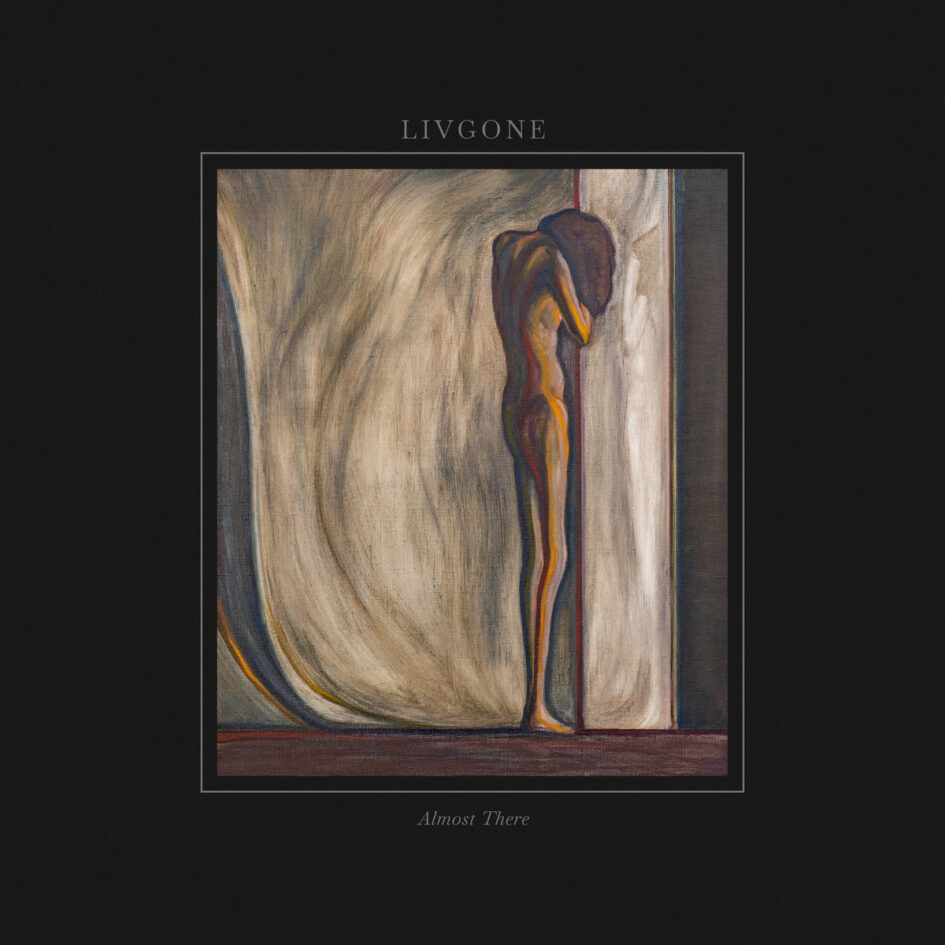 Almost There may be a debut album and Livgone a new band, but the people behind this project are anything but newbies, and that shows in numerous aspects of this LP, which turned out to be a pleasant surprise.
Almost There may be a debut album and Livgone a new band, but the people behind this project are anything but newbies, and that shows in numerous aspects of this LP, which turned out to be a pleasant surprise.
Drawn in by the promise of a sonic odyssey and the art nouveau style cover design and its combination of cold and warm colours, I chose this album for review without knowing anything about the band or its members. After the first few listens, however, it became obvious that honest skill and ambition stood behind this project and that the people involved must have previous experience in music making. Curious to know of what kind, I did a bit of research.
Livgone’s composer, vocalist and main person is Élise Aranguren who, now in her mid-twenties, has already quite an enviable career in music under her belt. Starting at the age of twenty-one, she has worked as stage manager, sound engineer and tour manager for no other than The True Mayhem. At the moment, she does the same job for Alcest and Watain. And Watain’s current drummer Emil Svensson, who played drums on their last live album Die in Fire – Live in Hell, also plays drums for Livgone. The line-up is made complete by multi-instrumentalist Michal Kielbasa from Poland who is involved in numerous projects and bands from various genres and also works as guitar tech for Mgla, Mayhem and Watain.
The soundscapes of Livgone, contrary to what you may think now, don’t have much overlap with black metal. Instead, they transcendent traditional musical boundaries, weaving together drone and ambient sounds with doom, psyche and clean vocals. A feeling for composition and just the right amount of melody – Élise Aranguren originally trained in classical piano – ties the songs and the various parts of the album together, resulting in an exciting, stirring and touching listening experience while simultaneously handling a difficult subject.
According to the promo material, Almost There was born from the depths of personal turmoil during the pandemic. For the album’s lyrics, automatic writing was used in order to lay bare the rawest emotions of the artist’s battle with anorexia. Imagined as a musical diary, the album “captures the emptiness, physical weakness, and the emotional void experienced during a battle with a disorder”, but simultaneously represents an audible punch against the disorder’s stronghold, offering solace to fellow sufferers.
I hear a bit of Messa, a bit of Wolvennest, and also a bit of Tori Amos in Livgone. But while Almost There has obvious influences and predecessors, it has also undeniably its own character and a singular trajectory.
The aethereal intro Walk to Derealization is followed by the combination of heavy riffage and musing vocals on Silverstone. Things get colder and doomier on Hypoesthesia where tremolo picked guitars are paired with dragging rhythms until midway through the soundscape changes, levelling out into an ambient absence. Watching Them Feel returns to a haze of guitars, trilling sounds, a musical downward spiral, paired with emotionally charged vocals. Dance So I Can opens with organ play and reminds me of Tori Amos’ survivor’s tale Me and a Gun. On J’y suis presque (I’m almost there), the only track with lyrics in French, the vocals are subdued, mixed below the haze of sound. Album closer There has no vocals at all, but instead features the sound of fire burning. It’s not a nice campfire sound, however. There are the chirping and cracking sounds produced by things ablaze, but also the electrical clicking of a machine, as if we were on the inside of a furnace.
As I said in the beginning, Almost There left quite an impression on me. It is a varied and ambitious debut and hopefully an indicator of even better things to come.
(8/10 Slavica)

Leave a Reply